Back to: head
Forward to: collum
Antennae
Each antenna in Polydesmida is made up of eight parts, called antennomeres. These are numbered distally from the base:
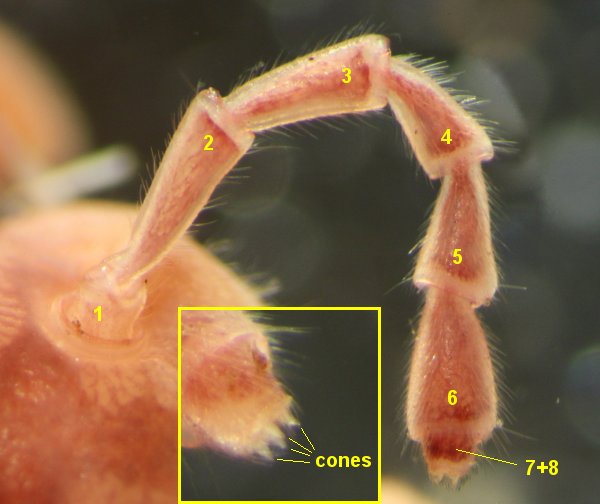
Tasmanopeltis grandis (Dalodesmidae), Tasmania
Antennomere 8 is very small and embedded in the tip of antennomere 7, which in turn is held more or less firmly at the tip of antennomere 6. The other antennomeres can each pivot on the tip of the next most basal antennomere. This gives the antenna as a whole a fair amount of flexibility.
The antennae are a polydesmidan's main source of information about the world. They are densely covered with sense organs. Most of these sensory structures are too small to be distinguished clearly under a light microscope, but there are (usually) four easily visible sensory cones at the tip of the antenna, on antennomere 8 (inset image above).
Antennae vary in three ways: length, shape and relative antennomere lengths and widths. In many of the tiny species with ground-facing heads, the antennae are short and compact (image below, left). The longest antennae are in cave-adapted species (below, middle). One very approximate way to compare overall lengths is to see which ring the antenna can reach when pushed backwards, over the head (below, right). This will not work if the species has a large collum (C) covering the head and antennae!
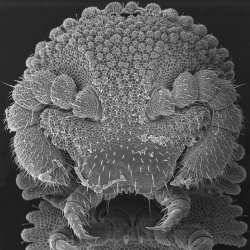 |
 |
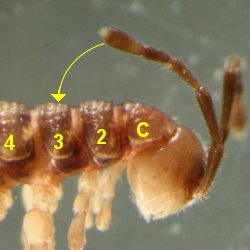 |
Agathodesmus steeli |
Desmoxytes scutigeroides |
Tasmaniosoma compitale |
The two basic antennal shapes are club-like, or clavate (below, left) and more or less uniform in width, or filiform ('thread-like'; below, middle).
Finally, descriptions of antennae in Polydesmida often say which antennomere is widest, then give a ranking of antennomeres 2-6 (and sometimes 7) by length. For example, the relative antennomere lengths for Tasmanopeltis grandis (top of page) are 2>3>6>(4,5). The antenna below at right could be described this way: Antennomere 6 widest; relative antennomere lengths 3>(2,6)>(4,5), but the length difference between antennomere 3 and antennomeres 2 and 6 is very small, so (2,3,6)>(4,5) would also be reasonable. Some Polydesmida specialists prefer to give absolute antennomere lengths, in millimetres.
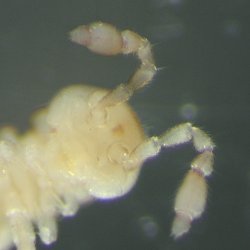 |
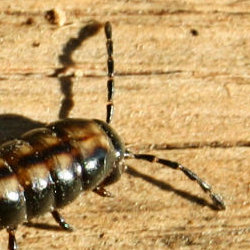 |
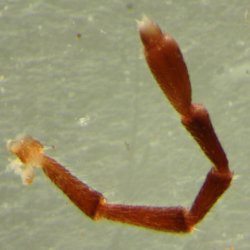 |
Ginglymodesmus sumac |
Unidentified Pogonosternum sp. |
Tasmaniosoma hickmanorum |
Back to: head
Forward to: collum
